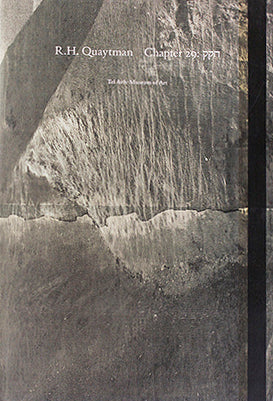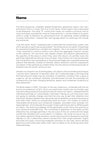חקק, Chapter 29
חקק, Chapter 29
R. H. Quaytman
Published by the Tel Aviv Museum of Art
2015
Foreword by Suzanne Landau, with essays by Mark Godfrey, Annie Bourneuf and R. H. Quaytman
Hardcover, 130pp., 47 color ill.
Designed by Michael Gordon
Hebrew/English
ISBN 978-965-539-121-3
Sequence Press is pleased to announce the publication of R. H. Quaytman’s חקק, Chapter 29. The book takes as its starting point the artist’s solo exhibition of the same title at the Tel Aviv Museum, and evolves into a chronicle of Quaytman’s obsessive investigation of an undetected and elusive image that she discovered behind the Angelus Novus, Paul Klee’s famous 1920 monoprint. Quaytman’s research, and eventual momentous identification of the image,are traced through a personal essay by the artist herself, along with extensive analytical commentaries by Tate curator Mark Godfrey, and Paul Klee scholar Annie Bourneuf, accompanied by full-page color photographic reproductions across two iterations of חקק, Chapter 29, from the original Tel Aviv Museum and later Miguel Abreu Gallery Orchard Street exhibitions.
The investigation begins with a body of paintings Quaytman made for a solo exhibition at the Tel Aviv Museum of Art, which took the Angelus Novus as a central motif. Frequently mining museum image archives as source material for her “Chapters” of paintings, Quaytman observed the Angelus during a rare in-person viewing at the permanent collection of the Israel Museum, Jerusalem, and noticed that an old copper plate engraving peeked out on all four sides. Quaytman writes, “After experiencing a familiar combination of shyness and repulsion towards this image, so weighed down by history as it is, my focus naturally scurried back to the materiality of the artifact. I instantly noticed around all four sides, an old engraving, discernible to the naked eye. An obscure old engraving, so devalued that no one had even noticed it. Clearly visible were the overlapping initials CL, a date…and black pleats from a gown suggesting a portrait of a priest, nun, or monk. I asked what was known about it and who was depicted in the engraving. To the astonishment of us all, it turned out that they didn’t know, because the question seemed never to have been asked.”
This teasing margin prompted a full-blown investigation, but when the Chapter was completed and first exhibited in Israel, the subject of the engraving remained an unanswered question; for Quaytman, however, the revealed margins of the print had become the intense focus of an inconclusive search that generated much of Chapter twenty-nine’s subject matter. Weeks later, the artist unearthed the print behind the renowned Angelus; an engraved portrait of none other than Martin Luther.
In חקק, Chapter 29, with the tools of the artist rather than the historian, interwoven with images of Israel’s desert landscape and Hebrew typography, Quaytman traces a labyrinthine path through museum archives, personal libraries, correspondences between Gershom Sholem and Walter Benjamin (the Angelus’ best-known owner), vast online image banks of engravings—and reaches a conclusion that is perhaps more puzzling and complex than the mystery she set out to solve.




